An RSI or repetitive strain injury is an injury to your body from repetitive movements or motions.
RSI may also be classified as an overuse syndrome or a cumulative trauma disorder (CTD) based on the fact that chronic overuse via repetitive motions often injuries or damages specific bodily structures.
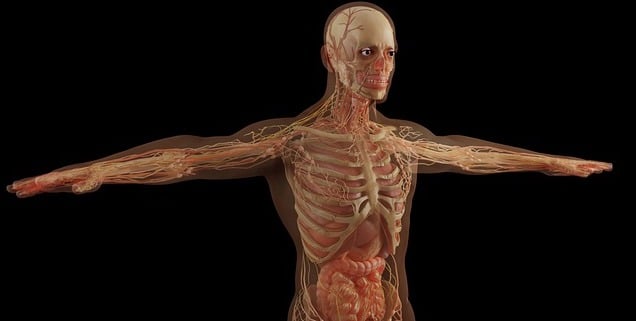
Repetitive strain injuries (RSI) have surged in prevalence primarily due to:
- Overtraining in athletics (e.g. weight lifting, one-sport-year-round athletes, etc.)
- Incessant usage of electronics (cell phones, tablets, computers, gaming consoles)
As someone who’s suffered from a severe RSI for the past 4+ years and invested hundreds of hours of my time researching RSI epidemiology, management strategies, and “cures” – I figured it might be beneficial to share my thoughts and perspective with others.
Since the emergence of my RSI in 2017, I’ve consulted over 6 medical doctors (3 internal medicine; 2 neurologists; 1 rheumatologist; 1 orthopedic hand surgeon) – so yes, I have consulted the “professionals.”
Development of my hand & wrist RSI (Onset)
In Spring 2017 I woke up with a numb, tingling sensation in the tip of my right index finger.
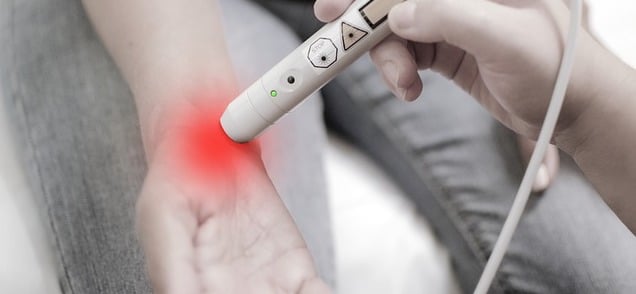
At first I didn’t think much of it – just assumed it was probably related to either lifting weights or working excessively on my computer with a mouse that had a half-broken click button.
The tingling sensation eventually became more prominent and I noticed a sensation of significant pain spreading throughout the backs of both my hands (from my wrist to my knuckles).
I Googled for answers and doctor Google suggested RSI (repetitive strain injury) as the most likely diagnosis.
Things I’ve tried for RSI
I began experimenting with a variety of RSI interventions in attempt to “fix” the issue:
Hand stretches/exercises: As recommended by orthopedic surgeons and physical therapists on YouTube. Was religious in following what was suggested and made it a routine.
- Effect: Significantly worse pain
Strengthening exercises: Many people recommended trying certain wrist strengthening exercises such as wrist curls, finger curls, moving rubber bands with fingers, etc.
- Effect: Significantly worse pain
Wrist braces: It was recommended that I try braces around my wrists/forearms for carpal tunnel syndrome (CTS). These improved my pain slightly relative to no braces.
- Effect: Modest improvement. More substantial improvement when paired with “strict rest.”
Yoga: I tried full body yoga routines for a while thinking that stretching and relaxing might loosen up tight muscles and essentially promote healing in my hands.
- Effect: None
Meditation: I read theories about how excessive psychological stress can restrict blood flow to the hands and damage nerves, blood vessels, small muscles, tendons/ligaments, etc. So I meditated with headspace daily for a while.
- Effect: None
Sarno method: I came across something called the “Sarno” method by John Sarno MD. Sarno believes that most cases of pain and RSIs are a manifestation of psychological stress.
- Effect: Significantly worse pain (due to lifting heavy weights, working hard, and essentially not focusing on symptoms)
Inversion table hanging: Bought an inversion table thinking I may have had a pinched nerve in my spine or something that was decreasing blood flow to my hands – creating significant pain.
- Effect: None
Sleeping on back & on floor: Tried sleeping on my back because side sleeping is bad if carpal tunnel syndrome (to play it safe I made a habit of sleeping on my back). I also tried sleeping on the floor based on various online chiropractor recommendations. This is supposed to help with pinched cervical spine (something I’d considered a possibility).
- Effect: None
Ice water soaking: I read that soaking my hands in ice water might help. I soaked them in ice water each day for as long as I could tolerate (they’d go completely numb).
- Effect: None
Supplements: I tried a variety of supplements for nerves, bones, joints, etc. including (but not limited to): curcumin; glucosamine/chondroitin with MSM; cannabidiol (CBD oil); Lion’s mane mushroom; vitamin C; alpha lipoic acid; type 2 collagen; vitamin B-complex; vitamin D with K2; cissus quadrangularis; magnesium citrate; fish oil; krill oil.
- Effect: None
Massage: Tried self-massage, massage with rumble roller (entire forearms and hands), massage with lacrosse ball, had other people massage my hands/forearms.
- Effect: Worsening of pain
Myofascial release: This is a form of deep tissue massage wherein the goal is to target specific pain points thought to be caused by knots in fascia (muscle tissue). Tried this daily for weeks and symptoms worsened.
- Effect: Worsening of pain
Low-level laser therapy: Bought a low-level laser designed to promote tissue healing and recovery. Used daily for a while in hopes that it would promote healing.
- Effect: None
Anti-inflammatory medications: Tried over-the-counter anti-inflammatories like ibuprofen, acetaminophen, etc.
- Effect: None
Antibiotics: Took doxycycline for 1 month because a doctor was thought possible arthritis related to a potential tick bite (even though I never had a tick bite). I figured why not give it a shot (nothing major to lose as doxy is pretty safe).
- Effect: None
Opioids: Tried a variety of opioids thinking that maybe this would help with the pain I was experiencing in my hands.
- Effect: None
Gabapentin: Was prescribed gabapentin after several nerve conduction studies revealed abnormalities in median and radial nerve firing (delayed latency). It was assumed I had nerve pain and this is a popular medication for nerve pain.
- Effect: None
Weight loss & weight gain: Experimented with losing weight and gaining weight to see if it would have any effect on my hand pain. Had read studies about how losing fat can improve nerve health – and other studies about how gaining weight may help with nerve health.
- Effect: None
Voltaren gel: Was prescribed voltaren gel by an internal medicine doctor who thought I had some sort of arthritis.
- Effect: None
Capsaicin: Tried capsaicin patches and creams on my hands to determine whether this might help increase blood flow, and thus promote healing from my injury.
- Effect: None
Fingerless gloves: I thought that keeping my hands warmer while typing would increase blood flow and promote healing, so I bought fingerless gloves on Amazon to test this hypothesis.
- Effect: None
Caffeine avoidance: I cut out caffeine from my diet and did not use any stimulants. I thought that maybe stimulants were reducing blood flow to my hands such as to prevent healing.
- Effect: None
BPC-157 peptide: Out of desperation (after several years of making no significant progress), I ordered an unregulated peptide that appears to promote healing of nerves and tendons in select animal studies. Properly reconstituting (mixing) with bacteriostatic water and injecting, etc.
- Effect: Modest improvement (transient)
Diet changes: Experimented with high fat diets, low fat diets, high protein diets, low protein diets, etc. and specific foods that were deemed useful in nerve regeneration and/or tendon healing (based on studies that I found).
- Effect: None
Cardio exercise: Because I suspected a possible nerve injury, I experimented with regular cardio (jogging) to determine whether this might stimulate peripheral neurogenesis and/or re-myelination of nerves.
- Effect: None
Ergonomic changes to workstation: Experimented with different computer mice; tried 3 different ergonomic keyboards; and got a motorized/adjustable bamboo desk. (Kinesis Advantage 2 keyboard; Anker vertical mouse; and adjustable desk helped a bit).
- Effect: Moderate improvement (only while working)
Standing desk: I adjusted my motorized, height-adjustable desk to a standing position for the entire duration of my workday.
- Effect: None
Warm baths: I assumed that taking a warm bath daily might help relax any tension “knots” and/or increase blood flow to my hands/forearms for quicker healing.
- Effect: None by itself. Synergistic benefit with “strict rest.”
Strict rest: This entailed zero cell phone usage (absolutely none); zero computer usage (absolutely none); and zero weight lifting (absolutely none).
- Effect: Complete recovery (after 2 weeks)
Things I haven’t tried for RSI…
Nitroglycerin patches: To enhance blood flow to hands and promote tendon/nerve healing. (I also couldn’t convince my doctor to prescribe these).
CBD patches (transdermal): To decrease inflammation and pain levels.
Dragon Naturally Speaking (software): To avoid typing altogether.
Note: Keep in mind that the list of things that I tried is not in any particular order. There may also have been other interventions I tried that I’m forgetting.
Treatments that helped my RSI (Ranked)
1. Strict rest (Highly effective)
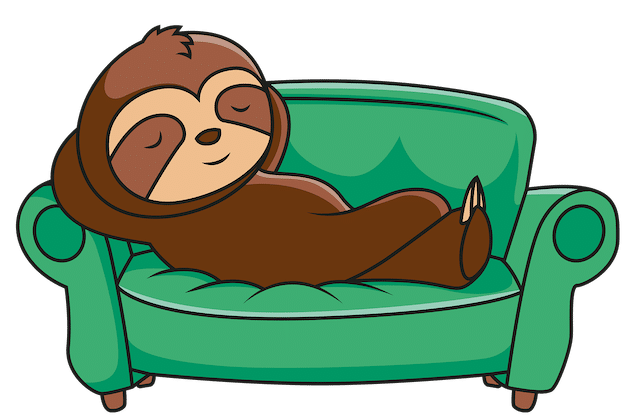
This was the ONLY intervention that allowed for complete resolution of RSI symptoms.
- It was extremely difficult to: stay off of my computer and cell phone; not lift weights; not use the TV remote; avoid excessive driving (holding steering wheel was painful AF).
- If I engage in “strict rest,” my RSI completely recovers – but as soon as old activities are reinstated (e.g. daily weight lifting, 3-6 hours on cell phone, along with excessive computer work), the pain reemerges and becomes severe again.
- I should note that recovery with “strict rest” makes me feel as though my RSI is completely gone (zero pain in hands and hands feel like they did before my RSI).
- In fact, the first time I engaged in “strict rest” and my hand pain went away, I couldn’t even believe that this intervention worked. It was as if “magic” had been performed and somehow the RSI Gods decided to heal me.
- Interestingly, when the RSI vanishes following strict rest, I have the urge to lift weights, use my phone, and work like crazy from my computer because I’m in zero pain.
- However, I now know that I need to limit myself from going “all out” back into my old routine (specifically with lifting and my cell phone) or my RSI will gradually creep back (over ~1-2 weeks and become severe again).
Why can’t I go back to my old habits after recovering with “strict rest”?
Unknown. Before the onset of my RSI, I’d been powerlifting and bodybuilding, working like a mule (typing and clicking a lot), and addicted to my cell phone – for probably ~8 years.
It’s possible that a combination of regular/excessive usage over an 8-year timeframe coupled with natural aging is what set the stage for an RSI.
Neither myself nor my doctors know what the exact triggers or catalysts were that may have induced my RSI.
Other variables that I’m unaware of could’ve causally influenced RSI development.
Nevertheless, RSI is my new reality – and I must adapt.
Now I’m in a routine where I: only work at an ergonomically-optimized workstation (4-8 hours per day); avoid lifting weights and resistance training (have experimented with bodyweight stuff and the pain becomes severe quickly); and minimal cell phone usage (under 1 hour per day).
2. Ergonomic workstation, Wrist braces, Warm baths

Ergo set-up
Creating an ergonomic workstation was key in reducing (not eliminating) my RSI pain.
Prior to my ergonomic set-up, I thought I’d never work again (this was depressing as hell) because the pain was extreme.
Carpal tunnel wrist braces helped me immensely. Bending my wrist up, down, or sideways caused more pain.
Wearing these braces allow my hands/wrists to relax without the bend and it seems to promote modest healing relative to no brace.
The pain is reduced when I wear my braces.
Warm baths
The magnitude of beneficial effect of warm baths on my RSI remains unclear.
I combined warm baths wherein I’d soak my arms/hands and relax while engaging in “strict rest” for ~1-2 weeks.
This combination is effective, but I’m not sure how much the baths are aiding in recovery.
That said, it subjectively “feels” like warm baths are helping with healing via increasing blood flow to my forearms, wrists, and fingers.
3. Avoidance of aggravating activities
After many self-experiments, I began avoiding anything that made my RSI pain worse (common sense).
Why continue something that clearly aggravates/worsens RSI pain?
Things that made my pain significantly worse included: lifting weights; hand/wrist “exercises” and stretches; Sarno method; massage; and myofascial release.
Moreover, activities like: weight lifting; bodyweight exercises involving hands (push-ups, pull-ups); excessive mountain biking; and using my cell phone need to be avoided.
4. Limit cell phone use
Limiting my cell phone usage is immensely beneficial for my RSI.
I now do NOT check my phone when waking or use my phone before going to bed.
If necessary (e.g. need to make a call) I’ll make it short, concise and put the phone on speaker so that I don’t need to hold it.
That said, I do NOT play any games or endlessly browse the internet, YouTube, social media apps, or send text messages – like I used to.
5. Subcutaneous injections (BPC-157 & bacteriostatic water)
Subcutaneous injections of BPC-157 did in fact improve my hand pain rapidly.
However, I believe that these improvements were more attributable to the injection of “fluid” than the actual BPC-157.
Why? There’s evidence that injections of pure saline or saline with 5% dextrose can improve median nerve gliding and carpal tunnel syndrome symptoms – particularly in patients with mild-to-moderate cases.
Furthermore, I do not believe BPC-157 can repair tissues in 24-48 hours (although admittedly could be dead wrong here).
I suspect that the fluid injected (bacteriostatic water with a bit of BPC-157) may have separated injured/inflamed nerves from surrounding connective tissues.
This would provide relatively quick symptomatic relief by allowing the nerves to glide without resistance from tissues (e.g. fascia).
Because I began experiencing vertigo (not something usual for me) and a medical doctor advised me to stop using BPC-157, I did.
That said, I probably should’ve followed up with a self-experiment that might be helpful: inject plain bacteriostatic water (perhaps with 5% dextrose – as has been shown beneficial in studies) near painful areas on hand/wrist and assess RSI symptoms.
This should give me some general idea as to whether the BPC-157 was actually necessary for RSI symptom relief.
(Will update this article if I do another self-experiment).
Okay so now I’m an RSI guru and completely recovered with no pain?
No. Due to lack of diagnostic clarity (numerous doctors couldn’t agree on a diagnosis) and knowledge gained from my self-experiments, I’ve self-diagnosed with an RSI.
The most helpful of my doctors was a rheumatologist who suspected that I was likely dealing with nerve entrapment – probably median and/or radial nerve entrapment.
Technically things like carpal/radial tunnel syndromes can be RSIs.
As an orthopedic hand surgeon told me, strict rest usually fixes even the worst cases of carpal tunnel syndrome he’s seen.
As he explained, the problem is that most people cannot keep “resting” – they need to use their hands for work (e.g. typing).
However, many people with RSIs have addictions to electronics (video games, computer browsing, cell phone usage) or other activities (e.g. construction, lifting weights, etc.).
These addictions mean that most people probably aren’t honest with themselves about time spent purely resting – or that they don’t ever try resting.
Other anatomical variables (e.g. square wrists, being overweight/obese, vitamin deficiencies, etc.) can increase risk of developing an RSI (to varying degrees) and/or exacerbate a current RSI.
As I’ve mentioned, I certainly have some type of RSI (repetitive strain injury).
This was deduced from the fact that when I’m very strict about strict rest – I experience complete recovery.
When I start working again after feeling like my hands are 100% reborn, brand new, with zero pain – the pain gradually creeps back.
Why? I suspect that I may have overused my hands/wrists to such an extreme degree in the past, that even with strict rest, they aren’t completely healed (despite feeling fully healed).
Perhaps I’m also not resting long enough.
Maybe if I were to avoid work, my cell phone, etc. for months – I’d make a full recovery and then could use an ergonomically-garbage set up; lift heavy; and use cell phone nearly ad-libitum like the days of old.
Moreover, it’s possible that I do have a combination of injury to my: tendons, bones, joints, small muscles in hands/wrists, and nerves (median and radial).
If I do in fact have an abnormal presentation of carpal tunnel syndrome, maybe surgery would be an easy fix – but the surgeon didn’t feel confident in this diagnosis (made by the neurologist) and advised against surgery.
Future plan of attack & ongoing RSI investigation

1. Ultrasound (hand/wrist)
I’d like a diagnostic ultrasound performed on my hand/wrist by an experienced neurologist, radiologist, or orthopedic hand specialist for a second opinion.
Ultrasounds of the hand/wrist can be extremely useful in diagnosing tendon and nerve conditions – and they’re relatively inexpensive.
Unfortunately, I haven’t been able to find anyone even remotely near where I live who specializes in this.
Have been investigating whether it’d be possible to have a tech perform the scan and a radiology specialist interpret the results.
Update: Ultrasound was performed and the ultrasound revealed significant inflammation of the median nerves – suggestive of carpal tunnel syndrome.
2. Surgery if deemed beneficial
If an ultrasound were to confirm carpal tunnel syndrome and/or radial tunnel syndrome – and surgery was recommended – I’d get the surgery in a heartbeat.
Why? Because surgery might be a permanent cure – enabling me to go back to lifting weights, typing pain-free, and using my phone ad-libitum without rest.
As soon as I reinstate usage of my phone, computer, and lifting weights – especially if usage is excessive – RSI pain gradually creeps back until it becomes severe.
3. Continued “rest” & avoiding aggravators
Obviously right now I’m continuing to maximize rest of my hands/wrists and am avoiding all aggravating activities (e.g. resistance training, mountain biking, excessive cell phone usage, etc.).
I’m also taking intermittent “mini breaks” throughout the day from typing on the computer and clicking the mouse – and using my carpal tunnel wrist braces in the evening while relaxing and throughout the night while sleeping.
If the pain becomes unbearable again, I’ll resort to “strict rest” (zero usage of my hands) until recovered along with daily warm baths and continued wrist bracing.
4. Ultrasound-guided hydrodissection or perineural injections (R1, R2, R3, R4)
In my research of RSIs, I came across a case study in which hydrodissection with a 5% dextrose solution completely cured a jazz musician of a longstanding (28-year) upper extremity RSI.
This jazz saxophone player had tried nearly everything he could think of to manage the problem – but nothing helped.
Eventually he somehow was fortunate enough to receive a series of ultrasound-guided fascial tissue infiltrations with 5% dextrose.
These tissue infiltrations downregulated c-fiber activity within the upper extremities and completely resolved his RSI related pain and dysfunction.
His recovery was sustained without recurrence for 4 years following the treatment – suggesting that a simple therapy like this can provide long-lasting symptom relief and possibly cure.
Other studies suggest that hydrodissection decreases gliding resistance of the median nerve within the carpal tunnel in persons with carpal tunnel – and without it.
Will what helped my RSI help others?
No, of course not (this should be common sense).
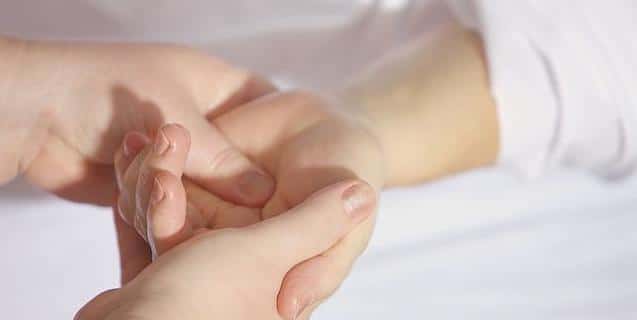
Not everyone with an RSI has the same RSI subtype that I’ve been dealing with.
In addition to potentially exhibiting an entirely different RSI subtype – even people with the same subtype as myself (i.e. pure RSI) may not present an RSI in the same location (hands/wrists/forearms) as myself.
RSIs can affect any part of the body. Even people with RSIs affecting the same general body location (e.g. hands/wrists) may not end up with the same specific injuries.
Therefore, we can expect interindividual differences in symptoms.
My median and radial nerves were affected (according to nerve conduction studies) and my primary symptom was noticeable pain in the back of my hands, sharp burning/tingling sensations, weakness, and modest numbness.
RSI Causes & Triggers (Recap)
Things that either caused and/or exacerbated my RSI.
Lifting weights
The heavier the worse for my RSI.
However, even simple bodyweight push-ups, pull-ups, burpees, etc. cause severe pain to reemerge within 1-4 days of training.
Though I love lifting and resistance training, it was common sense to stop the training (it just exacerbates the pain).
Cell phone
Excessive usage of my cell phone is nearly as bad for my RSI as lifting weights.
Though cell phone usage doesn’t cause as much pain in my hands and wrists as resistance training, the pain becomes severe when I use my cell phone for more than several hours per day.
Typing & clicking (computer)
Typing and clicking while using the computer isn’t as aggravating as weight lifting or cell phone usage.
However, prior to implementing ergonomic adjustments, it used to be just as bad.
Though my ergonomic adjustments didn’t “cure” my pain, they took my pain from a severe level (unable to work) to a modest-moderate level (can work).
Synergy of aggravators
If I go bananas and lift weights, use my cell phone as much as my reptilian brain center wants, and I work hard on the computer – the RSI pain becomes severe in under 48 hours.
If I keep things up for a week, the entirety of my hands, wrists, and forearms burns and is very painful.
Things that probably did NOT cause my RSI…
Random (probably incorrect) hypotheses. Random hypotheses that I thought of as potentially causing my RSI (that are probably inaccurate) included:
- Doctor “guess” diagnoses: Arthritis (internal medicine doctor); myofascial pain syndrome (orthopedic surgeon); possible infection (internal medicine doctor); post-infectious peripheral neuropathy (internal medicine doctor); small-fiber neuropathy (internal medicine doctor).
- Cervical spine misalignment: I thought maybe my cervical spine was misaligned from poor posture and/or tension and that fixing it would improve blood flow, reduce pain in my hands, etc.
- Autoimmune condition: I speculated that maybe there was some autoimmune condition I’d developed wherein my immune system was attacking the nerves in my hands – possibly leading to a condition like multiple sclerosis (MS) which my neurologist had on her differentials.
- Fasting: I did a water-only fast for over 7 days approximately 6 months before the onset of my RSI. Since I’d never experienced pain like this, I thought the fast may have altered something within my immune system and/or nerves to cause nerve damage.
- Weight loss & diet: Prior to my RSI, I’d intentionally dieted down to lose ~15 lbs. by tracking calories and macronutrients – while exercising (weights and cardio). Never before had I intentionally dieted down like this and thought the weight change or altered macronutrient intake (extremely high protein) may have damaged my nerves.
- Psychological variables: I was somewhat stressed and depressed in the months before developing my RSI. However, this is nothing different than years before its onset. The stress and depression was no different than any other year – so I think this was more of a coincidence.
- Poor posture & rigidity: I’d considered that poor posture and/or rigidity may have caused my RSI so I became mindful of my posture and even worked in an “optimal” standing position to determine whether this would help. I also stretched my entire body several times per day – yet derived no benefit.
- Smoke exposure: For a while I was living in a home wherein the heat was generated by a “wood burner” or wood burning stove. I didn’t like this because I’d constantly smell the wood smoke fumes every time my parents loaded up the stove. I said I’d pay for their heating, but they wanted to run this stove. Since this was a new “variable” in my life, I figured it might be to blame in some way.
- Carbon monoxide: The carbon monoxide alarm went off one night after I began noticing pain in my hands/wrists. I think this may have been related to the usage of the “wood burner.” I considered this as a possibility, but since I lived with others and none experienced symptoms of poisoning, I figured this probably wasn’t to blame. Moreover, I didn’t have any classic symptoms of carbon monoxide poisoning and the alarm beeping was short-lived.
- Infection: I ended up diagnosed with a rare infection called MAC (mycobacterium avium complex) despite: never smoking (anything); eating healthy; exercising regularly; and engaging in zero unhealthy activities. It’s possible that this infection may have triggered some immune reaction and/or inflammation that damaged my nerves to cause an RSI.
What probably caused my RSI?
What I think happened is that I increased my workload slightly and began using my cell phone more than usual – all while engaging in a bodybuilding routine which involved a lot of lifts and progressive overload.
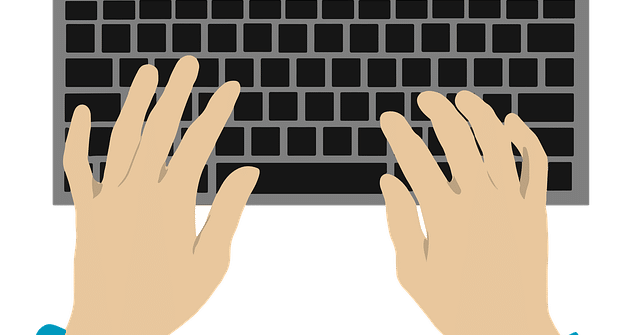
Increasing computer work
Instead of working on just one project per day for 4-8 hours, I began doubling up. I would probably spend over 12 hours per day just on my computer.
Keep in mind that this was all from a workstation with horrible ergonomics (small laptop/keyboard, horribly uncomfortable & angled chair, high desk, half-broken mouse that I had to click excessively).
Increasing cell phone use
After work I’d be glued to my cell phone (Googling stuff, playing “word” games, swiping through songs, on Snapchat, dating app swiping, etc.).
I think my cell phone usage increased in sync with my computer work (which seems odd, but it’s true).
Was probably spending 4-6 hours per day on my phone.
Lifting weights
I was doing an intense bodybuilding routine that would take 1-3 hours per day at the gym – and involved heavy weights.
Despite this aggravating my pain, I kept telling myself that this would eventually “fix” the pain (dumb).
Stress
Physical and psychological stress from overworking and lack of rest.
Perhaps stress indirectly contributed to my RSI by reducing blood flow and interfering with efficient healing of overused muscles – and/or interfering with sleep quality/duration.
Combination of everything
So in sum, my fingers, wrists, hands and forearms were taking a massive beating from a combination of:
- Excessive computer work on a tiny laptop in a terribly non-ergonomic position
- Increased cell phone use (was a cell phone addict after work)
- Lifting heavy weights regularly (adding to the strain)
Investigating my RSI (Tests & Consults)
X-Rays
Required by insurance before meeting with an orthopedic surgeon. Didn’t show anything out of the ordinary (expected).
Blood work
My rheumatologist ruled out autoimmune conditions and arthritis, gout, etc.
My neurologist ruled out vitamin deficiencies and other conditions. Lab tests looked excellent.
Nerve conduction studies
Had 4 nerve conduction studies (each spaced ~6 months apart).
3 were performed by my primary neurologist and 1 was performed by a different neurologist.
All with similar findings (delayed latency of median nerve firing – specifically the motor branch).
One revealed abnormalities in radial nerve firing as well.
Official medical opinions

I’ve probably spent nearly $12,000 in medical bills specifically related to this RSI and have still had to self-diagnose because I don’t think most of their diagnoses are accurate or conclusive.
- Internal medicine doctor #1: Arthritis. (Total guess before nerve conduction studies performed)
- Internal medicine doctor #2: Possibly post-viral neuropathy or small-fiber neuropathy. (Random guess)
- Internal medicine doctor #3: Inflammation.
- Rheumatologist: Nerve entrapment. (Accurate)
- Neurologist #1: Carpal tunnel syndrome. (Possibly accurate)
- Neurologist #2: Possibly carpal tunnel syndrome but unlikely (due to “motor branch” of median nerve being affected). (Possibly accurate)
- Orthopedic hand surgeon: Unclear. Maybe myofascial pain syndrome? (Random guess)
- Orthopedic hand surgeon: Very likely carpal tunnel syndrome. (Based on ultrasound + nerve conduction studies)
Note: I also talked to a chiropractor (not by choice). They suggested random diagnoses related to autoimmunity (laughable).
Keep in mind that chiropractors are NOT medical doctors and are not qualified to make diagnoses.
They are doctors of a pseudoscientific practice. (None of his suggestions helped and his quick “adjustments” made things worse).
(BTW, if you think chiropractors are “real doctors,” you are NOT my target audience.)
What was the initial trigger or catalyst for my RSI?
Overuse – using hands/wrists to an unnatural, excessive extent.
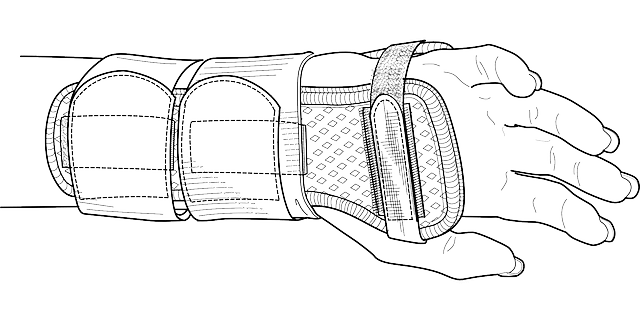
Though my analytical brain was examined every variable in my environment along with my lifestyle choices (e.g. fasting, dieting, etc.) – it’s unlikely that anything other than overuse led to my RSI.
Prior to the onset of my RSI (~2017) I was in a routine of: (1) lifting weights 4-6 times per week (~1 hour per session); (2) using my cell phone after work (probably at least 6 hours per day); (3) working 12+ hours per day (typing on a tiny laptop computer with a half-broken mouse that I never bothered replacing).
In fact, continuing to use a half-broken mouse that I needed to sometimes click several times before it would function may have been the initial cause of the numbness in my right index finger.
However, looking back, I think that I was working longer hours than ever before – which meant greater aggravation on hands/wrists.
In the past, I don’t think I spent 10-12 hours per day on my laptop (every day with no breaks – not even weekends or holidays) – and I definitely had a fully functional mouse (as opposed to a half-broken one).
Additionally, I think I may have been using my cell phone more than I ever had after finishing my work.
The combination of excessive computer work, lifting weights, and ridiculous cell phone usage – probably thrashed my hands/wrists.
It is possible that some variable(s) that I’m unaware of and/or dismissed may have been causally involved in my RSI.
Potential synergistic variables, triggers, catalysts
- Viral infection (likely influenza) contracted after a Christmas gathering (January 2016)
- 10-day water-only fast (Fall 2016)
- Intentional weight loss (~15 lbs.)
- Dietary changes (consuming higher protein than ever before)
- Caloric restriction (never done before)
- Wood smoke exposure (never exposed before)
- Rare lung infection (M. avium complex) likely related to wood smoke exposure.
- High psychological stress and poor sleep (not a new variable)
- Poor posture/ergonomics. Posture was terrible (may have contributed) – although fixing my posture didn’t result in improvement.
All that said, over-analysis is often ineffective and doesn’t provide greater clarity.
My guess is that these variables probably did NOT have much to do with the onset of my RSI.
Why? “Common things are common, uncommon things are uncommon.” – Infectious disease doctor.
In other words, because there’s no common link between these variables and RSI – they probably didn’t contribute.
Because reducing my stress, treating my infection, switching my diet back to normal, regaining lost weight, etc. had no impact on my RSI – all while “strict rest” cured it (at least temporarily) – it made no sense to assume (with strong conviction) that the above variables played a role.
Drew’s 6 RSI Types (Diagnosis)
In my years spent researching RSIs, I come to the realization that people have one of 6 RSI subtypes.

I created this subtype classification system below.
Keep in mind I’m not attempting to diagnose you or suggest that my RSI subtypes are somehow medically official.
Prior to attempting self-diagnosis, I encourage everyone reading this to consult a licensed medical doctor (MD) for an official medical diagnosis (most people do not have chronic RSIs).
1. Pure RSI (Overuse)
Caused by frequent repetitive motions over an extended timeframe.
- Treatment: Strict rest.
How do you know if you have a pure RSI?
Simply stop the offending activity and rest for an extended duration (e.g. weeks or months) and determine if you recover.
For example, if you think that you’ve developed an RSI in your legs from jogging – stop jogging for a month and reassess your symptoms.
If you’re experiencing hand pain, stop engaging in the offending activity (e.g. cell phone use, lifting weights, gymnastics, computer use, etc.) for a reasonable duration (~1 month) and reassess symptoms.
Assuming your symptoms completely disappear and you feel cured or you experience massive improvement – chances are you had a pure RSI caused solely by overuse.
With the “strict rest” intervention – it is imperative that you be honest with yourself.
Many people will think it’s okay to still continue the offending activities if they simply reduce the intensity or time.
(I deluded myself into thinking this was okay – such as by: allowing 15 minutes of phone usage; doing just 20 push-ups instead of 100; and/or typing for 3 hours instead of 10 – thinking it shouldn’t make much of a difference).
The reality is that when you’ve developed a pure RSI – even limited usage/activity can interfere with the healing process – that’s why you need to be committed to 100% strict rest; no damn excuses or exceptions (seriously).
This is very difficult because chances are good that the activities contributing to your RSI were addictions for you (cell phone, computer, video games, exercise regimens, etc.).
You need to go from 100 mph to 0 mph (not 100 mph to 50 mph).
Once your condition feels healed, proceed with caution. Do NOT go right back to your old habits. Instead gradually titrate upwards.
Try typing for 30 minutes per day for awhile and rest the entire remainder of the day.
Eventually you can find a “sweet spot” of work wherein you can perform the activates you need – without causing pain or RSI relapse.
From here on out you’ll want to set custom, personalized limits and restrict the amount of time engaging in offending activities such as to avoid a flare up.
Remember, if you heal completely from purely resting – then you know you had a pure RSI (repetitive strain injury) caused by overuse.
2. Posture-related “RSI”
Caused by atrocious posture more so than repetitive movements.
- Treatment: Posture improvement, ergonomic adjustments, strengthening exercises, flexibility exercises.
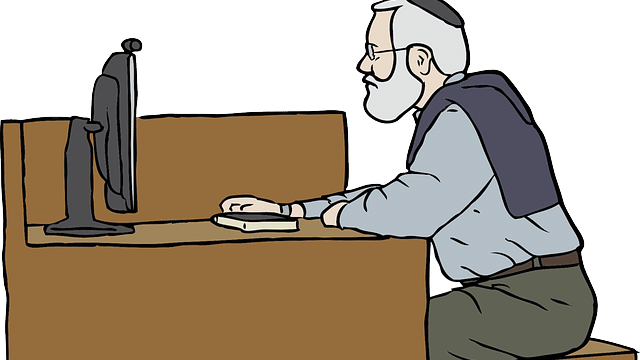
If your body is regularly in contorted or odd positions while you work, this can increase risk of injury (e.g. developing numbness, tingling, etc.) from even normal movements and workloads.
The fix for posture-related RSI is multi-faceted and includes: posture improvement and ergonomic modifications – possibly along with strengthening and stretching exercises.
Poor posture can restrict blood flow to certain body parts; put pressure on nerves and tendons; and increase likelihood of RSI.
For some people, simply being mindful of posture throughout the day (consciously sitting upright or standing while working) and/or making ergonomically-optimal changes to a workstation will completely “cure” the RSI within days.
Additional interventions may include: strengthening exercises (if weakness or muscle imbalances are causing the slouching/poor posture) and flexibility exercises (if excessive rigidity is causing poor posture).
Those who need to build up strength and/or flexibility may not notice improvement in RSI symptoms for several weeks or months (because strength and flexibility don’t dramatically improve overnight).
3. Weakness RSI
This is an RSI caused by overuse of weak muscles and/or muscle imbalances.
- Treatment: Targeted exercises (building strength)
If you haven’t jogged/ran in years, and then are forced to run a marathon – the soreness will be unbearable.
If you gradually train yourself over months to prepare for a marathon, you build appropriate strength and won’t be nearly as sore.
For individuals with weakness-related RSI, strength is severely lacking in certain areas of the body and this could cause: muscle imbalances, posture problems, and/or pain when performing certain activities.
Gradually building up strength over a period of weeks or months will fix weakness-related RSI.
For example, if you notice pain reduction after following hand/wrist exercises suggested by an orthopedic surgeon or physical therapist – you’re probably building up strength/endurance which lowers pain.
4. Tension RSI
Caused by excessive tension and rigidity in certain muscle groups – which may reduce blood flow and impair healing.
- Treatment: Decreasing muscle tension (active release techniques, massage, myofascial release, warm baths, stretching, relaxation, myorelaxants)
If you’re a “tense” person, chances are you’re extremely stressed, suffering from anxiety, and/or overworking.
If interventions like massage (deep tissue massage), myofascial release, warm baths, stretching exercises, relaxation exercises, and myorelaxants improve your condition – you’ve got a tension-related RSI.
The easiest way to cure tension-related RSI is to take time each day to relax your body and actively relieve the tension (e.g. ART – active release technique; myofascial release; and mental relaxation).
Over time, blood flow will improve to the affected areas, the tension-related “muscle knots” will vanish – and you’ll feel as though you’re fully cured.
5. Psychological RSI (Functional RSI)
Emotional difficulties such as stress from: work, health problems, anxiety disorders, PTSD, traumatic events, depression, etc. can cause RSI-like symptoms.
- Treatment: Modulate neurochemistry (Sarno method, journaling, relaxation exercises, psychologist, psychiatrist, supplements/medications)

It’s important to note that not all individuals with preexisting psychological disorders will have psychological RSI – some might have a legitimate “pure RSI” attributable to overuse.
That said, persons with preexisting psychological disorders (particularly somatization disorders) may be more prone than others to the psychological RSI subtype.
One might also refer to the psychological RSI subtype as “psychogenic RSI” or “pseudo RSI” or “functional RSI” given that the pain reported isn’t resulting from overuse (despite the affected person speculating that it is).
In the case of psychological RSI, the primary cause of the RSI or RSI-like symptoms is the psychological state of the affected individual.
A clear sign that someone is dealing with psychological RSI is when area(s) of the body affected by alleged RSI pain aren’t the ones being overused (e.g. pain throughout legs despite working with hands).
Another sign of psychological RSI is when reported pain shifts and/or spreads randomly or unpredictably throughout the body – particularly in regions that aren’t being stressed with high workloads.
Unmanaged emotional stress can lead to: somatic pain, subconscious pain and tension (via many mechanisms including decreased blood flow/healing after activities) and might exacerbate existing pain.
Addressing all underlying psychological issues and correcting them is the fix for this type of RSI.
Because psychological status and neurochemistry is highly individualized – there’s not really a one-sized fits all treatment approach here.
Becoming aware that psychological stress might be causing your RSI-like symptoms is the first step towards recovery.
The next steps might involve: trying the Sarno method; relaxation exercises; working with a psychologist or psychiatrist; and possibly even supplements/medications.
In the RSI community, many sufferers have documented complete cures with adherence to the “Sarno method” (developed by John E. Sarno, MD) – a multi-faceted treatment for “tension-myositis syndrome” (TMS).
The Sarno method involves a combination of writing about emotional issues; resuming normal lifestyle (while discontinuing “treatments” for the pain); support meetings, and possibly psychotherapy.
Others may benefit from simple journaling; relaxation exercises (meditation, progressive muscle relaxation, paced breathing, etc.); a psychologist or psychiatrist; and possibly even supplements or medications to alter neurotransmitter levels (to increase psychological wellbeing).
6. Mixed RSI subtype
Mixed RSI or “hybrid” RSI is an RSI caused by a unique combination of overuse, poor posture, weakness, psychological abnormalities, and/or medical conditions and medications.
- Treatment: Identify and address all causal variables (overuse, posture, strength, psychology, medical conditions, medications, etc.)
A hypothetical example of the mixed RSI subtype could be someone with an untreated medical condition (e.g. depression) who exhibits poor, droopy posture as a result of the depression and uses the phone excessively as a means of coping with depressed mood.
In this case we’ve got a combination of an untreated medical condition (depression); poor posture (possibly restricting blood flow to areas); and overuse of the phone (repetitive strain).
A second hypothetical example of the mixed RSI subtype could be someone who is weak (lacking strength) but using these weak muscles excessively.
Because of the weakness, this person has posture issues and experiences rapid muscle fatigue/pain.
The only way for him/her to recover from the RSI is to rest, then gradually build up strength (overcome the weakness) over an extended duration such that muscles won’t rapidly fatigue or experience pain.
Identifying the mixed RSI subtype isn’t as difficult as one would think.
If you experience noticeable recovery (~80%) from your RSI with “strict rest” – and psychological relaxation further increases recovery (~20%) to the point that your RSI vanishes (100%) – you may have had a mixed subtype (80% overuse, 20% psychological).
Keep in mind that mixed subtype permutations will be subject to significant variation among RSI sufferers.
One person might have a mixed RSI characterized by 50% overuse; 30% poor posture and ergonomics; and 20% psychological stress).
Another individual might have a mixed RSI characterized by 60% muscle weakness (such as resulting from a medical condition) and 40% overuse.
Furthermore, even among persons with similar “mixed subtypes” (e.g. overuse + psychological) – the magnitudes of each contributing variable may differ.
For example: Person A may need to address the “overuse” aspect more than the “psychological” – and Person B may need to do the opposite.
If you have a mixed RSI subtype, the key is trying every fix individually and if it helps, continue.
If it doesn’t help (e.g. say strengthening exercises worsen the pain) – then avoid.
Everything said, I’d recommend not assuming you have a mixed RSI from the start.
Most people have one primary RSI subtype and can treat it with the “fixes” specific to that subtype.
7. Undiagnosed medical condition (or medication side effects)
Certain medical conditions and/or medications may cause RSI-like symptoms (e.g. nerve pain/tingling, pain sensations, muscle soreness, etc.).
- Treatment: Treating medical condition and/or adjusting medications
Some people assume they have an RSI when in fact they have a medical condition and/or are on a medication that’s causing RSI-like symptoms.
For example, if you are deficient in vitamin B12, you may develop peripheral neuropathy and mistakenly assume that it’s related to overuse (because you work or exercise a lot) when it’s really due to a serious vitamin deficiency.
Additionally, if you’re taking a medication and notice neuropathic pain, there’s a chance that the medication may be causing the pain (rather than overuse like in a pure RSI).
Another example might be someone with fibromyalgia who assumes their pain is from overuse and/or bad posture – when it’s really from untreated fibromyalgia.
This is why I always emphasize getting evaluated by a legitimate medical doctor before assuming you have an RSI.
Note: There can be overlap in RSI subtypes. For example, someone might have a combination of posture-related RSI, weakness-related RSI, and psychological-related RSI – all related to one or more medical conditions (e.g. anxiety/depression, obesity)
RSI Tests I Recommend
A medical doctor should have an in-depth understanding of your situation and what tests might be beneficial to enhance diagnostic clarity.

Below are some tests that I’d consider if recently diagnosed with an RSI.
Strict rest test
Stop the offending activity for 2+ weeks (literally no excuses) and determine if you improve. If strict rest improves your situation, you had a pure RSI.
Medical evaluation & physical
Check for and rule out things like muscle wasting, osteoporosis, infection, autoimmune conditions, etc.
Blood work
Get labs done to rule out vitamin deficiencies (especially vitamin B12), autoimmunity, and infection.
Ultrasound
It’s cheaper and way quieter than an MRI. No high radiation like you’d get from a CT scan.
Ultrasound of the hands/wrists can show damage to nerves and tendons and is useful in diagnosing conditions like carpal tunnel syndrome and tenosynovitis.
Nerve conduction study
Seek a qualified neurologist and get a nerve conduction study done. These will show how well your nerves are firing.

If you have an RSI in your hands, nerves (median, radial, ulnar) might be implicated.
CT or MRI
If an ultrasound isn’t showing much and nerve conduction study is coming up short, you may opt for a CT scan or MRI.
- CT scan = high radiation (probably not good unless necessary).
- MRI = insanely loud (horrible for ears even with protection).
MRIs can help rule out things like cervical spine abnormalities.
X-Ray
Doctors will probably require that you get an X-Ray.
These are pretty useless unless you suspect bone damage or breakage.
Self-tests
Certain tests you can find online (websites or YouTube) might give you some general idea as to whether you have conditions like carpal tunnel, radial tunnel, or ulnar tunnel syndrome.
(Examples: Phalen’s test, tinel sign, etc. for carpal tunnel).
Best RSI Resources
Though I’ve listed a lot of resources, be cautious about scrolling and clicking on them all if you’re experiencing a lot of pain (don’t aggravate your RSI).

If you have a “pure RSI” caused by overuse, you should read and fully comprehend/internalize the first article linked below before anything else.
Pure RSI
Probably the most credible/trustworthy website on the internet for any and all pain conditions – including repetitive strain injuries.
The ONLY reason I recovered from my RSI is due to comprehending and internalizing the information from this article.
Weakness-RSI
If you have an RSI caused by weakness or benefit from “exercises” – these are 2 legitimate channels to follow.
Levi Harrison is an orthopedic hand surgeon and Bob & Brad are licensed physical therapists.
- Dr. Levi Harrison: A legitimate orthopedic surgeon with exercises and tips for many different types of RSIs.
- Bob & Brad: You may find something helpful from these physical therapists as well.
RSI Books & Resources
- It’s Not Carpal Tunnel Syndrome: One of the most comprehensive books on RSI.
- The Divided Mind (Book): For those with psychological/psychosomatic “RSI.”
- Sarno Forum: For those with psychological/somatic RSIs.
- Bone & Joint supplement guide: If you want to try supplements for bones, joints, etc.
Smart people with RSIs and their experiences
- MDLayher: A programmer with RSI.
- JBenDeaton: Data scientist with RSI.
- Evan Travers: General RSI tips.
- Evan Weaver: Programmer with RSI.
- YCombinator: Interesting discussion on YCombinator about RSIs.
Best products for RSI sufferers
Keep in mind that I’m not guaranteeing or even suggesting that the products I’m recommending will help you.

Always consult your doctor before trying anything that will affect your health.
These are things that lessened my pain while working and/or resting.
Kinesis Advantage 2
It’s a keyboard with the most optimal ergonomic layout.
I tried the Microsoft ergonomic keyboard and initially liked it, but was still in too much pain to work.
Kinesis Advantage 2 was the only keyboard that allowed me to work – so damn glad I took a chance on it (almost didn’t).
Don’t be intimidated by it either – it took me like one day to fully adjust to it. Wish I would’ve had this gem years ago.
Yes, it’s fairly pricey – but well worth it. Prior to even trying keyboards I was using an ergonomically atrocious standard laptop keyboard.
Vertical mouse
I tried several standard mice (fat ones, skinnier ones, etc.).
Even tried a joystick type mouse designed for arthritis (made my pain way worse).
Tried the Apple track pad (worsened my pain more than anything).
A vertical mouse is comfortable and allows my hand to rest while using.
Mouse pad
I use a mouse pad with a wrist bump so I can rest my wrist while using my mouse.
I do NOT like using a mouse pad with wrist support with a standard (non-vertical) mouse – as this can exacerbate pressure on the carpal tunnel.
As long as I’m using a vertical mouse the extra wrist support works well.
Adjustable chair
Doesn’t necessarily need to be expensive.
Just get one that’s comfortable, supportive, and that you can adjust for optimal posture, etc.
I linked to the Steelcase Gesture because it was the highest rated chair of 2022.
Adjustable desk
Get a desk that allows you to adjust the height.
Why? Because if your RSI is related to sitting in an awkward position, you’ll want this feature to optimize ergonomics.
If your RSI is related to sitting/slouching, you’ll be able to work while standing and determine whether it helps.
I use the Jarvis Bamboo desk (linked above) and it works well for me.
Wrist brace
This is used while resting your hands after work and while sleeping.
It maintains wrist neutrality while preventing or limiting flexion and extension.
Dragon Naturally Speaking
If you can learn to use Dragon Naturally Speaking software effectively – you can use the computer mostly hands free – or minimize time spent typing on the keyboard and clicking a mouse.
Some people claim that this software helped them recover from an RSI while improving their work productivity/efficiency.
Note: The links included to these products are affiliate links (meaning I earn a commission from the sale if you buy through me). I’d appreciate it if you’d buy through me (as the price is no different).
Supplements for RSIs
I’m not personally endorsing any supplements for RSIs because I never found any beneficial.

That said, I realize some individuals might derive significant benefit from supplements.
Supplements that are most likely to help improve: (1) joint, tendon, fascia, muscle, and nerve health/function and/or (2) reduce inflammation – are included below.
Note: Always consult a medical doctor before using any supplement to ensure that it’s safe based on your current health status/history.
- Multivitamin: Covers all of your bases. If you eat halfway decent and take a multivitamin each day, you shouldn’t have any glaring deficiencies.
- Omega-3 fatty acids: Primary options include: fish oil (common); krill oil (less common); algae oil (rare). All 3 are good sources of omega-3s. These help lower inflammation and may be very beneficial for certain types of RSIs.
- Vitamin B6: Some studies suggest that vitamin B6 (pyridoxine) can help treat carpal tunnel syndrome. It is unclear as to whether it repairs nerve damage or merely “covers up” nerve pain. Either way, it may be worth a try for nerve pain.
- Vitamin B12: Many people are low on vitamin B12 and don’t even know it. Low vitamin B12 levels can wreak havoc on your nervous system (causing permanent nerve damage and brain damage).
- B Complex: If you want to ensure that you’re not deficient in any B-vitamins, you can take a B complex supplement. Assuming you have any B-vitamin deficiencies, this should correct your levels quickly.
- Alpha-lipoic acid: Some studies suggest ALA can enhance nerve function and/or may repair damaged nerves.
- Vitamin D3: Vitamin D3 is extremely important for immune function, maintenance of healthy brain chemistry, and bone health.
- Vitamin C: High doses of vitamin C may enhance nerve and/or tendon repair/regeneration. Not really any downside here – may be worth a try.
- NAC: Some studies suggest that NAC (N-Acetyl Cysteine) may be beneficial in promotion of nerve repair/regeneration. It also helps your body produce glutathione on its own and is much cheaper (and probably smarter) than glutathione supplementation. (Could try Glutathione since NAC is no longer available OTC).
- Type 2 collagen: This is mostly for arthritis-related RSIs (e.g. osteoarthritis) – but may be worth trying for 30-60 days to determine whether your bones/joints feel better. (Read: Type 2 collagen for arthritis).
- Lion’s mane mushroom: Has been shown to upregulate nerve growth factor (NGF) which might be beneficial for nerve regeneration. (Read: Lion’s mane for nerve damage).
- Glucosamine, Chondroitin, MSM: Supplements containing a combination of glucosamine, chondroitin, and MSM tend to be beneficial for bone and joint health – particularly persons with arthritis. Still worth a try for anyone with bone/joint pain from an RSI.
- Curcumin: Significantly lowers inflammation. Should help with inflammation similar to OTC anti-inflammatory medications – while likely being safer. Keep in mind that lowering inflammation should help decrease pain but isn’t helping with repair (it’s simply covering up the pain). Only take if you are engaging in “strict rest” and want some relief.
- CBD (Cannabidiol): My rheumatologist recommended trying CBD from Charlotte’s web. Though it didn’t help my nerve entrapment, it may be beneficial for others with more bone/joint-related RSI. Like curcumin/turmeric, CBD lowers inflammation. You might even consider transdermal CBD for a more targeted effect (but investigate bioavailability if you go this route).
- Cissus quadrangularis: Perhaps one of the most under-the-radar supplements for bone/joint/tendon health. If you have an RSI related to bones, joints, and/or tendons – consider experimenting with Cissus.
- Magnesium citrate: A highly-bioavailable form of magnesium that significantly increases intracellular magnesium levels in the peripheral (also in the brain). Worth trying to enhance blood flow to extremities (which may promote healing) and to decrease muscle tension.
- Glycine: Has been suggested to improve bone/joint health. Has a naturally “sweet” flavor and should probably be taken at night (as it can cause drowsiness in large doses).
- Taurine: Taurine has been shown to promote tendon healing in animals and suggested as a possible intervention for neurological disorders.
- Melatonin: If your sleep is trashed and your body isn’t “falling asleep” properly at night (due to severe insomnia), you may want to try melatonin. The idea is to get yourself into “deeper sleep” with melatonin to help your body heal from the RSI.
- Calcium: Is well-known to promote bone and joint health. Works synergistically with vitamin D3 and dietary protein intake to prevent bone degradation.
- Potassium: An electrolyte that may benefit some individuals with bone/joint pain.
Medications for RSIs?
Medications from the doctor may be necessary for some individuals with severe RSIs to cope with pain and inflammation.
The problem is when people use these medications to “cover up” RSI symptoms and continue working (doing further damage).
- For example, if you type on the computer every day, lift weights, and use your phone excessively and develop pain in your hands – you might go to the doctor.
- The doctor might prescribe a potent anti-inflammatory like meloxicam or Voltaren gel.
- These interventions might dramatically reduce your pain such that you reinstate your “normal” activity (high use of computer, weights, phone).
- Unfortunately, this will result in even greater damage to your hands and long-term worsening of your RSI – it’s a trap.
- The reason you were in pain in the first place is because your body is signaling to your brain to STOP the activities causing the pain (e.g. computer, weights, phone).
- This would be similar to a marathon runner complaining of pain after running a marathon then getting a prescription for opioids or anti-inflammatories to block the pain – then running another marathon because the meds block out the pain (this is a huge mistake).
- If you use medications from your doctor – don’t think of them as promoting “healing” in any way and be very cognizant of possible side effects (many have serious side effects and some might have withdrawal symptoms).
So how should you use medications prescribed by a doctor? In conjunction with “strict rest” is best. For example, assuming you know that you have an RSI (from overuse) – it’s smart to commit to strict rest.
If you’re in pain while resting, you might take a medication designed to decrease inflammation and/or reduce pain.
While on this medication – even if you feel better – you do NOT want to reinstate the offending activities that caused your RSI (it will be tempting, but this is not the way towards improvement).
- Gabapentin & pregabalin: Potent voltage-gated ion modulators likely affecting GABAergic neurotransmission in the brain and nervous system. May help significantly with nerve pain, but beware of side effects and the withdrawal process.
- Opioids: I’m not anti-opioid unless you treat them like party drugs and/or have a susceptibility to addictions. Opioids may be immensely beneficial for severe RSIs if you’re not prone to addiction.
- Voltaren gel: If you have arthritis or inflammation in your hands, this gel may be helpful for decreasing pain. It’s easy to apply and should have a mostly-localized effect (targeting only the RSI areas) which is what you want.
- Meloxicam: Potent anti-inflammatory drug that can be obtained with prescription. Beware of tinnitus and/or kidney damage.
- Nitroglycerin patch: Some evidence suggests that these help with tendon repair/healing. Might be difficult to get one prescribed though for an RSI (as this is “off-label”).
- BPC-157 & TB-500: These are NOT FDA-approved agents for any medical conditions. I’ve tried BPC-157 and cannot endorse despite deriving modest benefit. BPC-157 is associated with tendon and nerve repair while TB-500 is basically an ultra-potent anti-inflammatory. (DYOR)
Note: I’m not endorsing a single medication for RSIs – as I personally found none helpful. Just listed some meds that I thought might be beneficial to some patients with RSIs.
Do you have an RSI? (Or did you have an RSI in the past?)
(If comments are still open on this article, feel free to participate by leaving a comment and answering the following questions).
- Did you consult a medical doctor? If so, what was the official medical diagnosis and suggested treatment?
- Based on my RSI subtypes, which subtype do you think you developed? (Pure RSI? Psychological? Mixed?)
- Which specific locations on your body were (or are) affected by your RSI?
- How severe was (or is) your RSI pain? (Weak, Moderate, Severe)
- How long did you deal with/have you dealt with your RSI pain?
- Did you eventually recover from your RSI?
- If you recovered from an RSI, were there any specific interventions (e.g. lifestyle changes, supplements, braces, ergonomic changes, surgeries) that you believe helped?